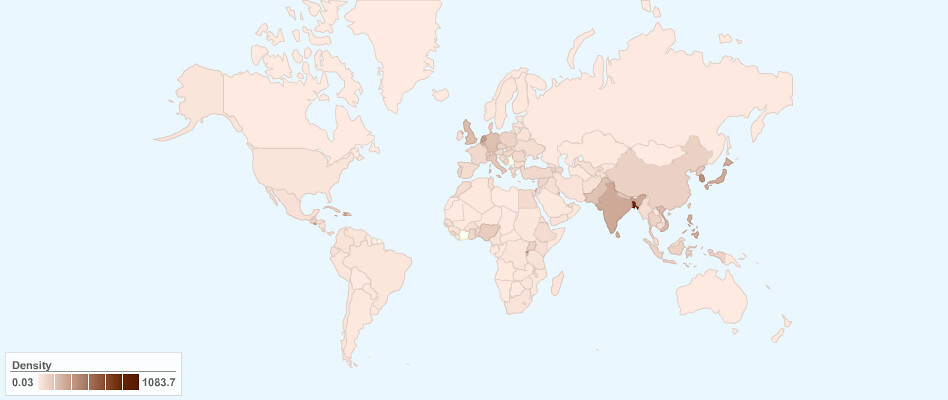Canada, a country renowned for its sprawling, awe-inspiring landscapes, stands as an intriguing anomaly among the world’s nations due to its low population density. According to data provided by the World Bank, Canada ranks as the fourth least densely populated country on a global scale, surpassed only by Namibia, Mongolia, and Australia, which house even fewer inhabitants per square kilometer.
Canada’s Immensity: A Striking Contrast
Although Canada has the reputation of being the second-largest country globally, it surprisingly houses a relatively modest population of just over 38 million. This number is dwarfed by the population of California, a single state in the United States, and poses a fascinating contrast.
The Role of Climate and Geography in Population Distribution
The main factors contributing to Canada’s sparse population are its harsh climate and rugged geographical conditions. Expansive areas of the country are blanketed by dense forests, towering mountains, and frigid tundra, leaving only a small fraction conducive to human habitation.
The Urban Landscape of Canada
Major Cities: The Heartbeat of Canada’s Population
The bulk of Canada’s populace is concentrated in a few major cities, such as Toronto, Vancouver, and Montreal. These metropolitan areas serve as cultural and economic hubs, offering an array of opportunities for both natives and immigrants.
Urban Migration: The Push Towards City Life
Over 80% of Canadians have chosen urban life, resulting in vast tracts of the country’s wilderness being scarcely populated or entirely devoid of human presence. This exodus towards urban areas is not unique to Canada, yet the scale and impact on the country’s natural landscapes are undoubtedly substantial.
The Socioeconomic Aspects of Low Population Density

Quality of Life Amid Sparse Population
Despite its low population density, Canada exhibits an impressive standard of living. The country boasts a robust and diverse economy, high-quality healthcare and education systems, and a well-developed infrastructure, making it a preferred destination for immigration.
Balancing Development and Conservation
The challenge for Canada lies in balancing its urban areas’ advancement with preserving its natural spaces. However, the current situation has allowed Canada to maintain much of its natural splendor, aiding in the protection of many unique ecosystems and diverse wildlife species.
Conclusion: Embracing the Charm of Canada’s Sparseness
In essence, Canada’s wide-open spaces and low population density offer a distinctive charm, contributing significantly to its character. This reality might present challenges, especially for individuals residing in remote and rural areas. Still, it also provides an unmatched quality of life for those who cherish the tranquility and solitude offered by nature.
A Call to Experience Canada’s Wilderness
Are you contemplating an escape from the ceaseless humdrum of city life? If the answer is yes, Canada might just be your ideal sanctuary, offering a unique blend of urban life and serene wilderness.
Sources:
- World Bank: https://data.worldbank.org/
- CBC: https://www.cbc.ca/
- Statistics Canada